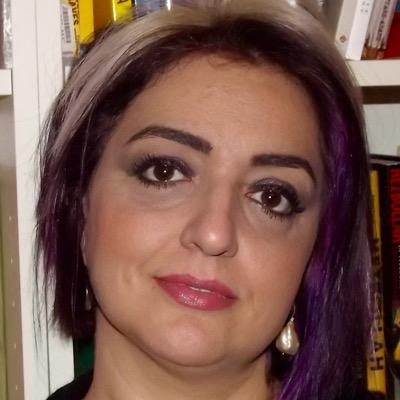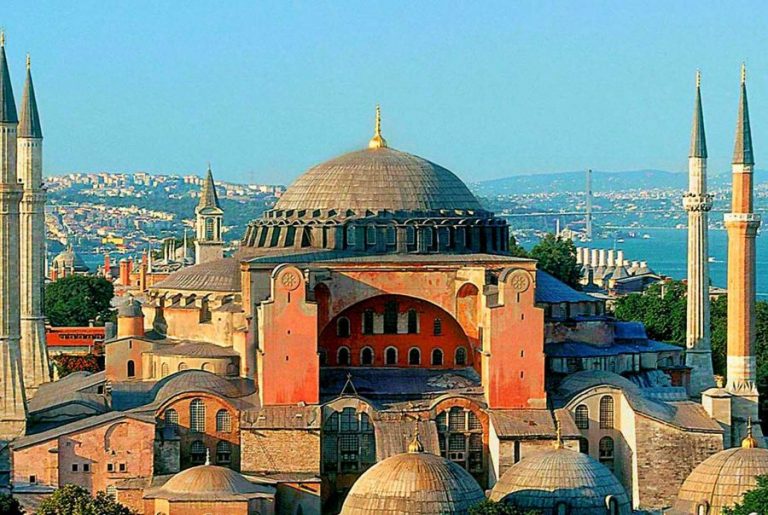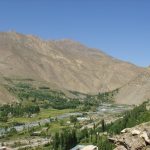On the 10th of July, the Turkish State Council gave the go-ahead for the transformation of the museum of the Great Hagia Sophia in Istanbul into a mosque accessible only to the faithful of the Muslim cult. The decision came after an appeal by a Turkish NGO against the Ataturk government’s decision in 1934 to make the great mosque (first Basilica) a museum. With a presidential decree, Hagia Sophia passed under the dependencies of Turkey’s Religious Affairs Directorate (Diyanet). According to the protocol, the Ministry of Culture and Tourism will supervise the restoration and conservation works, while Diyanet will supervise the religious services. Part of it will remain open to national and foreign tourists for free.
Despite the controversy of the religious and political world around the world, on July 24th there was the first opening to the public and the first khutbah (sermon). Criticism came from all over the Christian world, from political leaders and UNESCO who in 1985 entered it on the list of World Heritage Sites. The story causes discussion because it is a sacred place not only for Islam, but perhaps also because this decision comes from a conservative and Islamist leader.
Hagia Sophia (holy wisdom), a wonderful historical and architectural monument, was built in 537 under the Byzantine emperor Justinian I. Over the years its history would have crossed with that of the destinies of the winners and with the anger of nature. The crusaders who sacked Constantinople converted the (Orthodox) cathedral into a Roman Catholic Church for several decades. Earthquakes many times would have raged against the domes. In 1453 the Sultan Mehmet II after conquering Constantinople (Istanbul) transformed Hagia Sophia into a mosque. For nearly a thousand years Hagia Sophia was one of the largest churches in the world and the center of Christianity. Furthermore, for the next 500 years, it was known as the Haya Sofia mosque becoming one of the most important holy places for Islam. After the fall of the Ottoman Empire Kemal Ataturk founded the Turkish Republic. The government in its attempts to secularize the country after a dozen years, in 1934, transformed the building into a museum.
Erdogan’s move to convert Istanbul’s Hagia Sophia has caused controversy and criticism. The Muslim community itself, throughout the world, is divided. A group of Muslims supports the Turkish court’s decision and others condemn it. In Turkey, the issue connects directly to political and cultural as well as religious discourse. For those who do not support Erdogan, the decision is a total rejection of Ataturk’s secularist legacy and is a mere political move, part of his effort to recover for the next elections by holding the most religious part of the country close to him. Erdogan’s political position after almost two decades in power, after various internal affairs in these years, the coup failed, the arrest of thousands of people accused of being linked to the organization of Fetullah Gulen, after the war in Syria and the presence in Libya and in the face of the pandemic which further slowed an already unstable economy, has greatly weakened.
Politics was also the accusation that world leaders made in Erdogan. But was this really his purpose? Reading carefully its political history, the choice to make Hagia Sophia a mosque again was more than consistent. Turning old museums and old Byzantine churches into mosques has been part of the AKP program for at least a decade. The conflict over Hagia Sophia dates back to the time when Ataturk decided to make it a museum in 1935. (And frankly as one who lived in a country where churches and mosques were destroyed or made warehouses, gyms, palaces, etc I can understand the aversion to that decision). But only after 1965 the conservative press that supported the Justice Party begin to speak out more openly against Ataturk’s decision on Hagia Sophia. The discourse was of religious but also political significance. It additionally assumed a strong significance against its neighbor, Greece. While for the Roman Catholics the cathedral had its importance, it was for the Greek Orthodox that the Cathedral assumed a profound meaning.
For Erdogan, in all these years, bringing Hagia Sophia back to his mosque status is not only a dream of life that comes true, but also a source of national pride. And this is the fundamental reading that must be done. More than reinforcing his political position in the next elections (almost always the election can’t be won by the votes of the electoral base), turning in this way against the political and religious leaders of most countries, perhaps Erdogan consistent with himself wanted to make this choice for making a dream come true, make it his legacy and highlight the role and leadership that Turkey must-have in the Sunni world. Politically Erdogan is the model of conservative and sovereign world leaders such as Putin, Orban, or Trump who seek to challenge globalization by pursuing causes such as nationalism or religion. It is the sign of the times in which we live.
Author
-

Researcher on International Relations Middle East and Balkans
View all posts
CSSII- Centro Interdipartimentale di Studi Strategici, Internazionali e Imprenditoriali,
Università di Firenze, Italy, Albania




